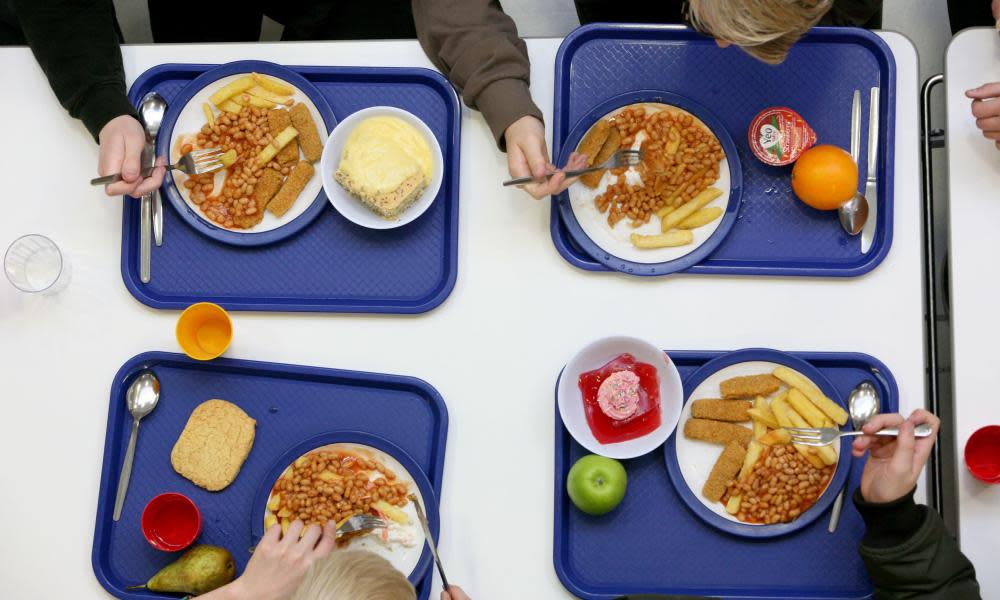It won’t cost much to make free school meals a universal right

During the pandemic the Manchester United footballer Marcus Rashford turned food into a hot political issue in the UK with his campaign for every child in a low-income family to be guaranteed a free school meal.
Since then, things have moved on. The problems facing low-income families – not just in Britain but everywhere – have worsened owing to rising global food prices. Consumers in the western economies have seen the cost of their weekly shop rise sharply. Food bank use in Britain has surged as a result of a cost-of-living crisis that has seen grocery bills rise by almost a fifth in the past year.
Simultaneously, a growing number of countries are now campaigning vigorously on the issue identified by Rashford. The School Meals Coalition is pushing for universal access to free school meals by 2030 as a response to rising hunger.
Governments in Bangladesh, Benin, Kenya, Nepal, Rwanda, Senegal, and many other countries have set their sights on providing school meals to all children. World leaders, such as Luiz Inácio Lula da Silva of Brazil and the French president Emmanuel Macron are supporters of the campaign.
A UN food summit in Rome starting on Monday will be presented with a proposal by the Sustainable Financing Initiative for School Health and Nutrition for a $6bn-a-year (£4.6bn-) scheme to extend free school meals to low-income countries where the need is greatest and current provision is weakest.
Those arguing for an expansion of free school meals say something is going seriously wrong with the global food system – and they are right. Enough is produced to feed a rising population yet hunger and obesity are on the rise. The social and environmental costs of the way food is produced are enormous.
Russia’s invasion of Ukraine has made a bad situation worse. Many deprived countries rely heavily on imports from Ukraine and were the main beneficiaries of the deal brokered by Turkey last year that allowed grain, oilseed and fertiliser passage across the Black Sea. That agreement has now been ended by the Kremlin, with an immediate impact on food prices in the commodity markets.
It is the countries of sub-Saharan Africa, which import about 40% of their cereals, that have most to lose. Ukraine grows about 10% of the world’s wheat and 15% of its corn, and much of the produce is exported to low-income countries already struggling with political instability and the impact of the climate crisis.
But the world food system would be in crisis even were the war in Ukraine to end overnight. The UN knows that, as does the World Bank.
Some might wonder what all the fuss is about because from one perspective the global food system is an example of innovation at its best. Back in the late 18th century, the economist Thomas Malthus warned that population growth would outstrip food production, leading to hunger and misery, but those fears have proved unfounded, at least until now.
In the past 225 years since Malthus first expounded his theory, higher agricultural productivity has meant the production of food has outpaced population growth, leading to better nutrition, lower levels of poverty and longer lives. Measured by yields a hectare, agricultural productivity continues to grow. The climate emergency could yet prove Malthus right, of course.
The proposal prepared for the Rome summit says the increase in agricultural yields masks four big failures: around 3 billion people don’t have enough to eat; unhealthy diets are leading to premature deaths and have resulted in a global obesity rate of 13%; intensive agriculture is causing ecological damage, with the food system accounting for a third of greenhouse gases; and many of the world’s poorest people live in rural areas in a state of permanent food insecurity.
“The way we produce, consume, distribute, and market food is damaging nature, fuelling public health crises, and driving us towards climate catastrophe. If we are to make progress towards the world envisaged by the (2030 UN) Sustainable Development Goals and the Paris Agreement on climate, we need to reset the global food system,” it argues.
There are many problems with the global food system. The increased prevalence of extreme weather events, commodity speculation and conflict all play a part and it would be naive to imagine that free school meals for all children of school age represent a magic bullet. That said, they would be a practical solution to a very real issue.
As Rashford so compellingly argued, giving a child at least one guaranteed square meal a day alleviates hunger, makes learning easier and improves health. School meal programmes can also be used to procure local produce, making food systems more sustainable.
Progress towards eradicating hunger has stalled over the past decade and as things stand the prevalence of undernutrition in 2030 will be the same as in 2015. Almost 300 million children of primary and secondary school age are either sitting in classrooms hungry or are not in school at all. In the UK, incidentally, there are 1.7 million children in households in receipt of universal credit who are ineligible for school meals.
For the scheme to work, rich countries would find around one-third of the $6bn annual cost, with the rest found by the governments of low-income countries through their budgets or though innovative financing ideas such as debt for school meals swaps, under which countries would channel the savings from debt relief into school meals programmes.
At a time when aid budgets are being cut, $2bn a year is small change for donor governments and represents just one day’s worth of annual subsidies to food producers. It is a small price to pay for something that could do so much good.

 Yahoo News
Yahoo News 
